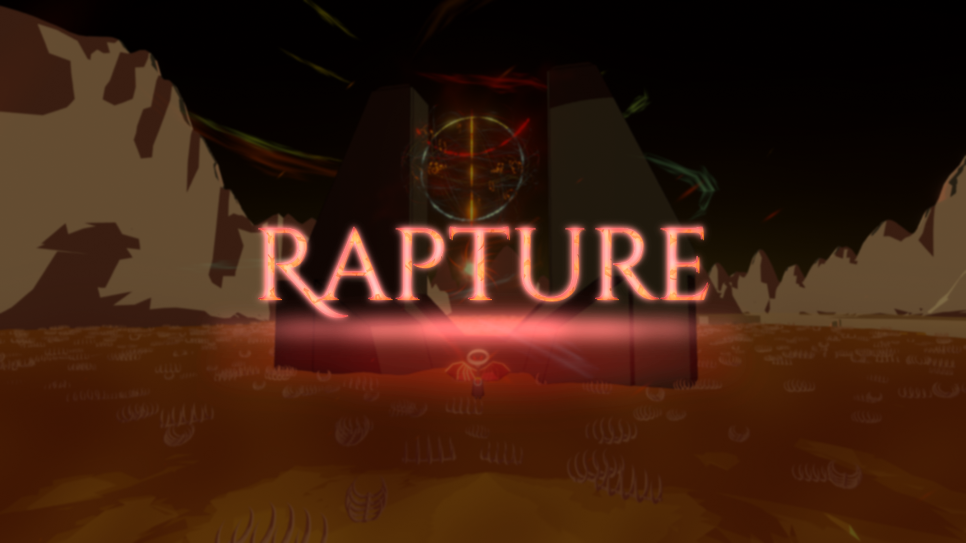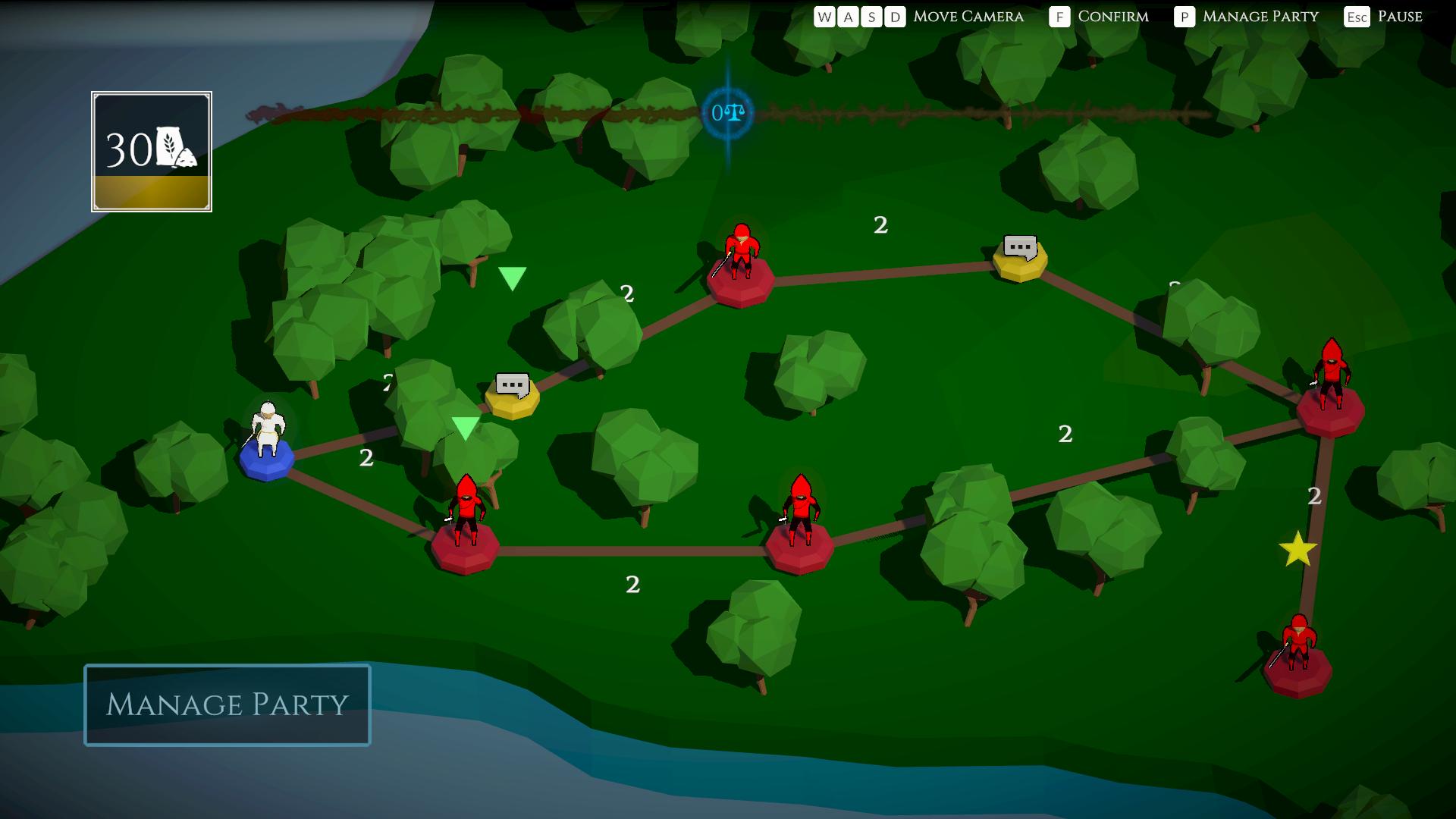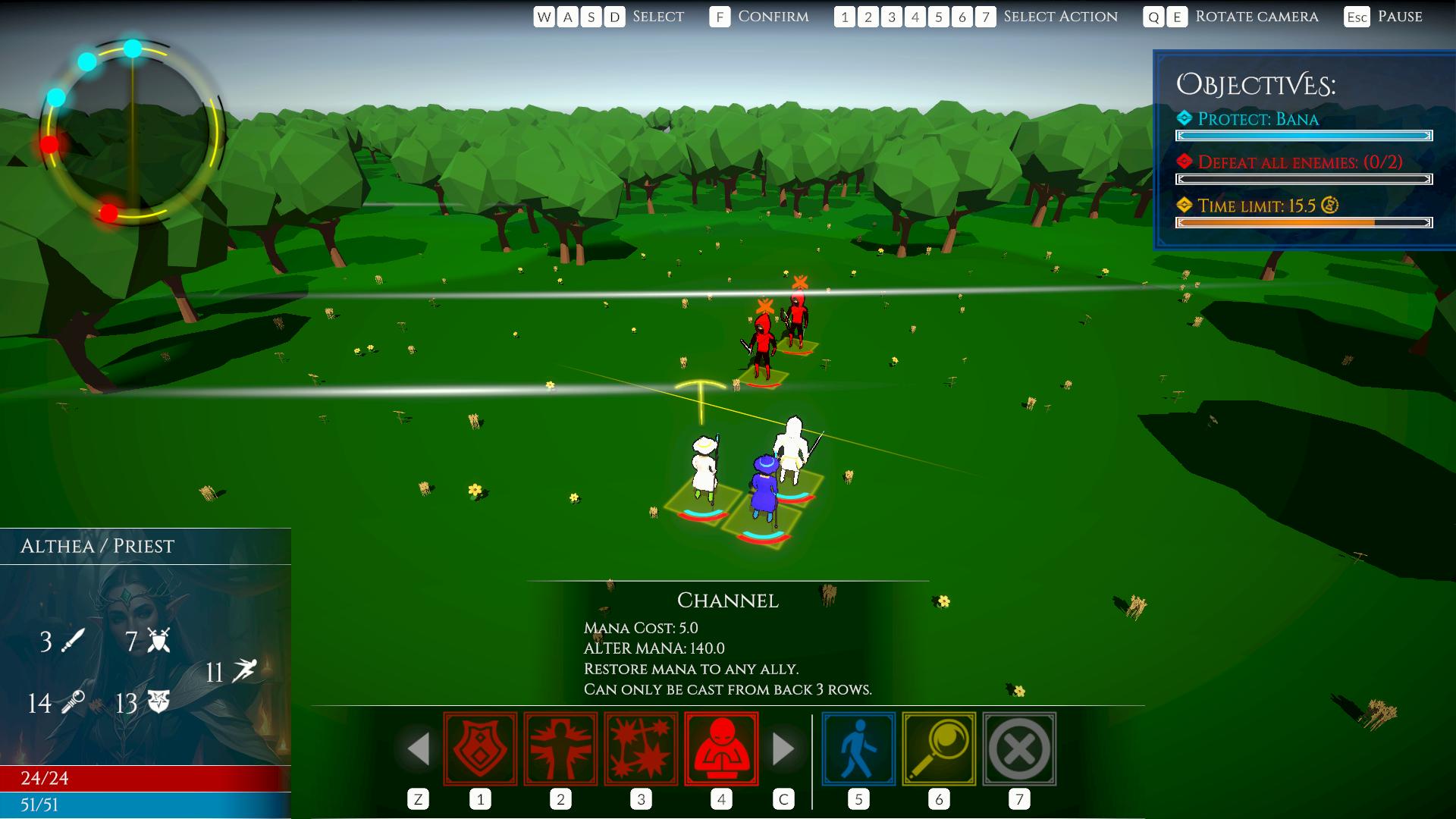Rapture
Rapture is a tactical role-playing game with a focus on grid-based positioning and an engaging narrative. You can play the game here.
The game was developed in Unity 3D and C#. It started as a project for a university game development module, but I and the rest of the team decided to continue working on it even after the module ended. It has been submitted to GDWC winter 2024 under the student project category.
I was part of a team of five as one of three programmers, and I was primarily in charge of the battle system. Having never worked on a turn-based system before, it was initially difficult to come up with a design as there were many requirements and moving parts. I broke down the requirements of the system and grouped them to build the system from the ground up using smaller, modular parts. This was also an extremely data-heavy game project. Extra consideration had to be given to the ease of accessing and editing data by the designers, which became a design challenge when considering the structures used to store the data. The cleanest design did not necessarily lend itself to easy data entry, and I consulted frequently with the designers to tweak the interface.
While working on this project, I was also completing a six-month client game programmer internship. This was a lesson in time management, and I had to juggle my responsibilities carefully to ensure I was pulling my weight for this project. I stuck to a strict schedule and worked on this project for an hour before work and for a few hours after work every day.
Implementation of the battle system:
- Turn-based system, including calculation and tracking of turn order
- Enemy AI - utilises a decision tree implemented in C#
- Player control during a turn - allowing the player to select skills, tiles, etc. while tracking the state of the player's turn and responding appropriately
- Unit data representation as a data structure and tracking it in battle, including status effects and skill cooldowns
- Implementing different skill effects and their interactions with units
- Data representation for skills, status effects, battles etc. as scriptable objects that designers could modify
Implementation of the world map:
- Handling of level nodes based on progress
- Implementation of cutscenes in the world map with cutscene triggers that can be used to control what happens during a cutscene
- Level unlock animation using splines
Implementation of editor tools:
- A tool to check the validity of data e.g. looking for repeated IDs and replacing them with unique ones
- A tool to easily navigate between the different scenes in the editor and easily load the game from the menu, or specific level and battle scenes
- A tool to help setup battle data, character data etc. by automating certain fields
Other things I was responsible for:
- Save management - game is saved at fixed points in the gameplay loop
- Implementation of tutorial system that shows up the first time a player accesses a feature
- Narrative flags
- Some UI screens such as the party select screen
Overall, I'm very proud of this project and how well the entire team worked together, and I consider this my most polished game project. We could have done better with the prioritisation of our features - we did not have a tutorial in-game when we presented the game at the school fair, which made the complex mechanics hard to pick up. We fixed this for the final submission to GDWC.



